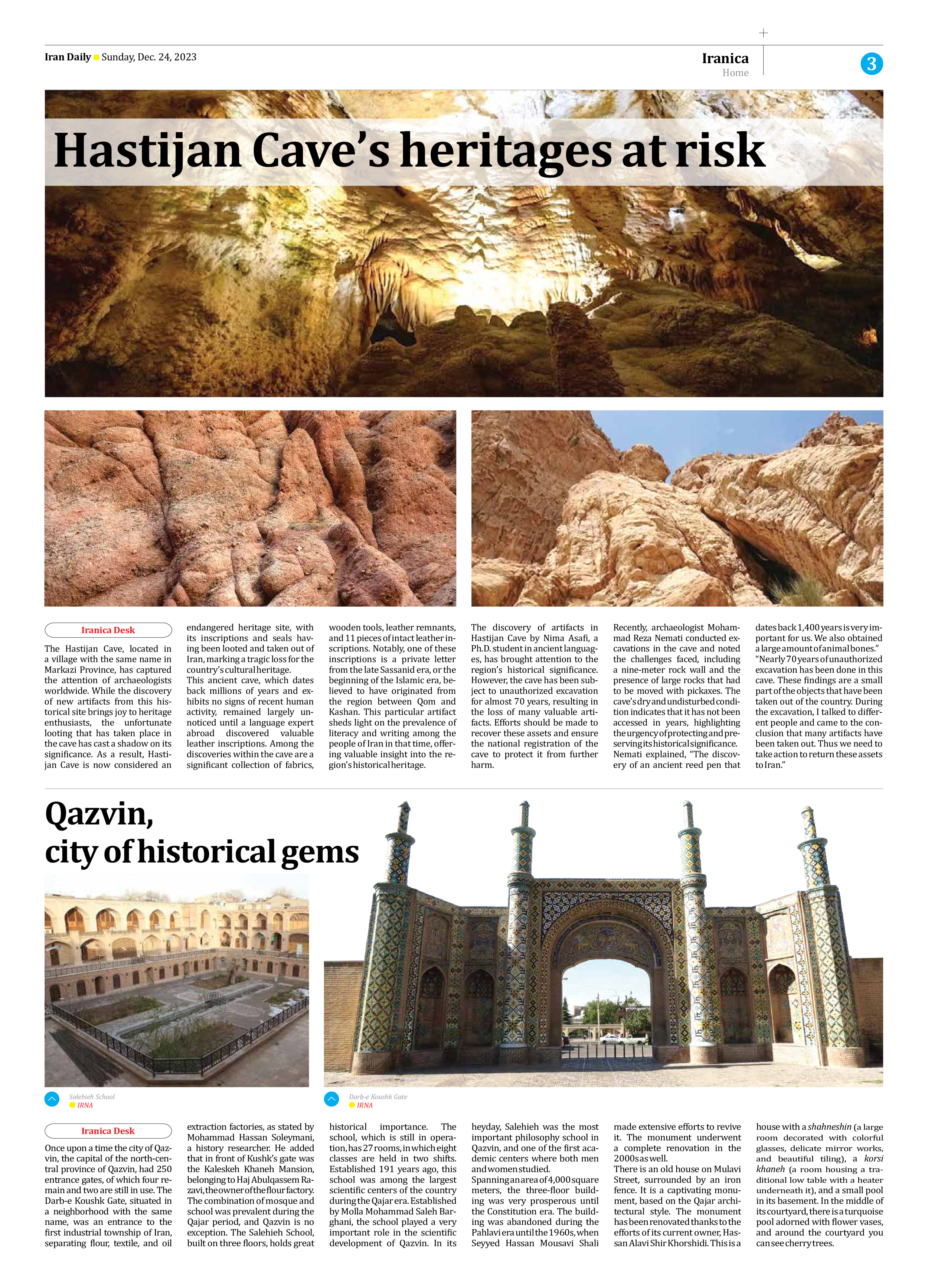
Qazvin, city of historical gems
Once upon a time the city of Qazvin, the capital of the north-central province of Qazvin, had 250 entrance gates, of which four remain and two are still in use. The Darb-e Koushk Gate, situated in a neighborhood with the same name, was an entrance to the first industrial township of Iran, separating flour, textile, and oil extraction factories, as stated by Mohammad Hassan Soleymani, a history researcher. He added that in front of Kushk’s gate was the Kaleskeh Khaneh Mansion, belonging to Haj Abulqassem Razavi, the owner of the flour factory.
The combination of mosque and school was prevalent during the Qajar period, and Qazvin is no exception. The Salehieh School, built on three floors, holds great historical importance. The school, which is still in operation, has 27 rooms, in which eight classes are held in two shifts. Established 191 years ago, this school was among the largest scientific centers of the country during the Qajar era. Established by Molla Mohammad Saleh Barghani, the school played a very important role in the scientific development of Qazvin. In its heyday, Salehieh was the most important philosophy school in Qazvin, and one of the first academic centers where both men and women studied.
Spanning an area of 4,000 square meters, the three-floor building was very prosperous until the Constitution era. The building was abandoned during the Pahlavi era until the 1960s, when Seyyed Hassan Mousavi Shali made extensive efforts to revive it. The monument underwent a complete renovation in the 2000s as well.
There is an old house on Mulavi Street, surrounded by an iron fence. It is a captivating monument, based on the Qajar architectural style. The monument has been renovated thanks to the efforts of its current owner, Hassan Alavi Shir Khorshidi. This is a house with a shahneshin (a large room decorated with colorful glasses, delicate mirror works, and beautiful tiling), a korsi khaneh (a room housing a traditional low table with a heater underneath it), and a small pool in its basement. In the middle of its courtyard, there is a turquoise pool adorned with flower vases, and around the courtyard you can see cherry trees.







